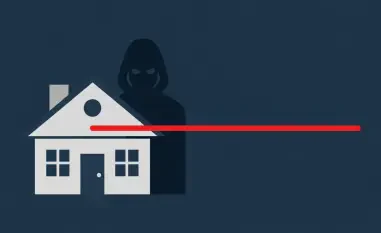Diving into the shadowy world of cybersecurity threats, we’re thrilled to sit down with Malik Haidar, a seasoned expert in combating digital dangers within multinational corporations. With a robust background in analytics, intelligence, and security, Malik has a unique knack for blending business perspectives with cutting-edge cybersecurity strategies. Today, we’re exploring the emergence of Raven Stealer, a new infostealer making waves in the cyber underground. Our conversation touches on its stealthy design, the data it targets, its novel use of communication platforms for data theft, and the broader implications for both individuals and businesses.
How did you first come across Raven Stealer, and what struck you as particularly concerning about this new threat in the cybersecurity landscape?
I first encountered Raven Stealer while monitoring underground forums where new malware often surfaces. What immediately caught my attention was its lightweight build and focus on stealth. Unlike many bulkier infostealers, Raven is designed to slip under the radar with minimal user interaction, which makes it a real challenge to detect. Its efficiency in targeting Chromium-based browsers and exfiltrating data through unconventional channels is a stark reminder of how quickly threats evolve.
What sets Raven Stealer apart from other infostealers you’ve analyzed in the past?
Raven stands out due to its streamlined design and operational concealment. It’s written in a mix of Delphi and C++, which isn’t as common, and this helps it maintain a low profile. Additionally, its integration with a popular messaging app for data exfiltration is a clever twist. Most stealers rely on traditional command-and-control servers, but Raven’s approach bypasses many conventional security filters, making it a tougher nut to crack.
Can you break down the type of data Raven Stealer targets and why this poses such a significant risk to users?
Raven primarily goes after browser-based authentication data—think saved passwords, cookies, autofill entries, and browsing history from Chromium browsers like Chrome and Edge. It also pulls credentials from other applications. This is a big deal because this data often grants direct access to personal accounts, financial systems, or even corporate networks. Once attackers have this info, they can impersonate users, steal identities, or sell the data on the dark web, leading to cascading damage.
How does Raven Stealer operate once it infiltrates a system?
Once inside, Raven activates a reporting mechanism that’s almost surgical in its precision. It harvests data like login credentials and system details, organizes everything into a neat format, and prepares it for transmission. It targets local storage paths and credential vaults in browsers, decrypts sensitive info using keys it finds, and even captures desktop screenshots. After compressing everything into a zip file, it sends the data out, leaving minimal traces of its activity.
One intriguing aspect is Raven’s use of a popular messaging app for sending stolen data. Why do you think attackers chose this method?
Using a messaging app like Telegram for exfiltration is a brilliant, if nefarious, move. It leverages encrypted channels that are widely used for legitimate purposes, so the traffic blends in with everyday noise. Most security tools aren’t tuned to flag this kind of activity as suspicious, which gives attackers a huge advantage. It’s a low-cost, high-impact way to move data without setting up complex infrastructure, and it complicates efforts to track or block their operations.
Can you explain how Raven Stealer is being distributed and marketed in the underground community?
Raven is primarily spread through underground forums and cracked software downloads, which are hotbeds for malware distribution. Attackers know that users looking for free or pirated tools are often less cautious, making them easy targets. Beyond that, they’re promoting and managing Raven through dedicated channels on the same messaging app used for data theft. These channels serve as both a marketing platform and a control hub, offering support and updates to buyers, which shows a disturbing level of organization.
Raven Stealer reportedly has mechanisms to cover its tracks. How does it manage to stay hidden after stealing data?
After completing its mission, Raven is meticulous about cleanup. It deletes malicious files from the system, often using legitimate antivirus tools to erase its footprints. It also reboots the infected machine into Safe Mode with Networking, which limits active processes and makes detection even harder. By operating in memory and avoiding persistent traces, it minimizes the chances of being caught by standard security scans.
Why is Raven Stealer seen as a threat to both personal users and business environments?
For individuals, Raven can lead to identity theft, financial loss, or unauthorized access to personal accounts—imagine someone draining your bank account using stolen credentials. For businesses, the stakes are even higher. If it infiltrates a corporate network, it could compromise sensitive client data, internal systems, or trade secrets, leading to reputational damage and legal repercussions. Its ability to enable further attacks makes it a gateway threat for both sectors.
What do you see as the broader implications of Raven Stealer acting as a stepping stone for other malicious activities?
Raven isn’t just a standalone threat; it’s often the first step in a larger attack chain. The data it steals—credentials, cookies, system info—can be used for ransomware deployment, phishing campaigns, or lateral movement within a network. Attackers can sell this data to others who specialize in follow-up attacks, creating a vicious cycle. It’s a prime example of how initial compromises can snowball into devastating breaches if not addressed swiftly.
What is your forecast for the evolution of infostealers like Raven in the coming years?
I expect infostealers like Raven to become even more sophisticated and harder to detect. We’ll likely see greater use of legitimate platforms for exfiltration, as attackers continue to exploit trusted systems to hide their tracks. Automation and modular designs will also play a bigger role, allowing low-skilled actors to customize and deploy these tools with ease. On the flip side, I think we’ll see stronger collaboration between security teams and law enforcement to disrupt these ecosystems, but it’s going to be a constant cat-and-mouse game.













